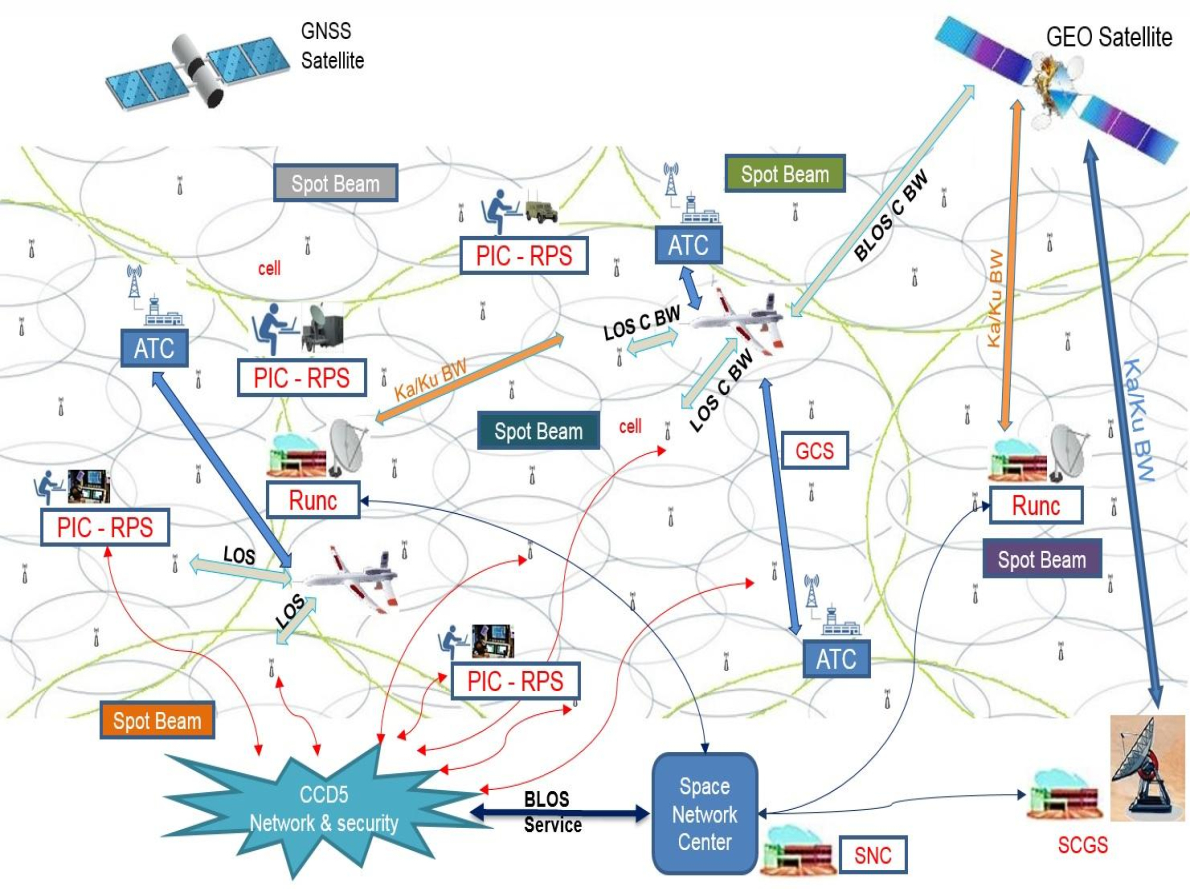
-
StatusCompleted
-
Status date2025-02-12
-
Activity Code3A.113
Starting from existing C2 air interfaces the activity is focused on developing C2 solutions including network and security aspects. The activity addresses critical aspects like aircraft handover, network log-on, interference between flying elements, and security at physical and network layers. The system is validated, and its performance assessed in a testbed capable of emulating realistically, simultaneously and in real time the terrestrial and satellite links.
To develop integrates solution for C2 communication (command and control) that including the network and security aspects. In particular the Project addresses the most critical aspects like aircraft handover and network log-on.
A network architecture capable of guaranteeing the long-range mobility of a fleet of UAVs and the security linked to the authentication of the UAV and communications with ground stations, also using the satellite link, to allow the spread of managed services by UAVs on a European scale. The solution proposed for the network and security layers presents tangible improvements compared to the protocols currently in use for fixed and mobile networks in which the terminal has only short-range mobility.
The testbed is capable of emulating realistically, simultaneously and in real time the terrestrial and satellite links.
The CCD5 IS project builds upon the outcomes of the previous CCD5 project, which enabled the definition of:
-
A set of rules and mechanisms facilitating communication among all actors within the navigation scenario of remotely piloted UAVs.
-
The operational properties of the communication medium, including key technical characteristics such as data type and volume, transfer speed, operating frequencies, bandwidth, modulation type, and more.
-
The design of the physical communication interface (Modem).
The system architecture of the CCD5 project is structured as follows:

The CCD5IS activity advances the development of the CCD5 project, extending beyond the physical interface layer to integrate a complete network and security layer. This enhancement enables the seamless integration of satellite and terrestrial links in the 5030-5091 MHz band, providing C2 communications for unmanned aircraft.
The network and security layer manages the identification of all network participants, ensures continuous UAV tracking throughout all flight phases, and oversees connection management and message routing in both LoS and BLoS modes. It guarantees a seamless communication experience, facilitates UAV satellite connectivity, and ensures the required security levels within non-segregated civil airspace.
The system has been rigorously tested through the design and implementation of a comprehensive testbed, integrating both the physical and network layers in a virtual and realistic environment, allowing for the evaluation of the communication system under real-world conditions.
The overall duration of the program is 24 months.
The program is divided into 6 outputs:
-
Output 0: Defined Reference Scenario - to define the use cases for the new developments, and the scenario(s) in which they would operate.
-
Output 1: Finalised Technical Specification - to define a complete, self-standing and traceable set of technical requirements for the new developments.
-
Output 2: Selected Technical Baseline – to select the technical baseline to achieve the activity objectives.
-
Output 3: Verified Detailed Design – to establish a detailed design and demonstrate that it can satisfy all the technical requirements.
-
Output 4: Implementation and Verification Plan – to establish all detailed plans necessary to successfully implement and test the deliverable items.
-
Output 5: Verified Deliverable Items and Compliance Statement – to implement the deliverable items, quantify their performance and demonstrate compliance to the technical requirements.
-
Output 6: Technology Assessment and Standardization document – to perform an assessment of the potential of the developed items for commercial exploitation and to provide a detailed description of the system for possible standardization.
The following milestones are foreseen starting from Kick-off (To):
-
A Technical Specification Review (TSR) at To + 4 months
-
Preliminary Design Review (PDR) at To + 8 months
-
Detailed Design Review (DDR) at To + 18 months
-
Final review (FR) and a Final presentation (FP) at the end of activities
The activities are completed





